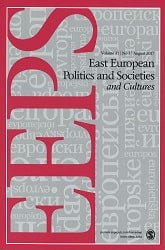Ideology, Reality, and Competing Models of Development in Eastern Europe Between the Two World Wars
Ideology, Reality, and Competing Models of Development in Eastern Europe Between the Two World Wars
Author(s): Daniel ChirotSubject(s): Agriculture, Economic history, Political history, Economic policy, Economic development, Interwar Period (1920 - 1939), Period(s) of Nation Building
Published by: SAGE Publications Ltd
Keywords: Eastern Europe; interwar period; 1920s and 1930s; economic history; economic development; idustrial development; Great Depression; agriculture;decline of agricultural prices and industrial production;
Summary/Abstract: It is commonplace to say that East European countries did not experience successful economic development during the 1920s and 1930s. It took most of the 1920s to repair the damage done by the war. In some cases , notably in Poland and Hungary , continued fighting after 1918 only made the situation worse. Trade patterns were badly disrupted by the collapse of the great empires in Central Europe. The industrial heartland of Poland lost its Russian market. Czech industry was cut off from Austro-Hungarian markets. Northern Yugoslavia and Transylvania were separated from the Habsburg Empire , too , and were joined to countries dominated by relatively more backward areas. Then, when the situation seemed to be improving , there came the Great Depression. The decline of agricultural prices and of industrial production during the early 1930s caused severe hardship. [...]
Journal: East European Politics and Societies
- Issue Year: 03/1989
- Issue No: 03
- Page Range: 378-411
- Page Count: 34
- Language: English
- Content File-PDF

